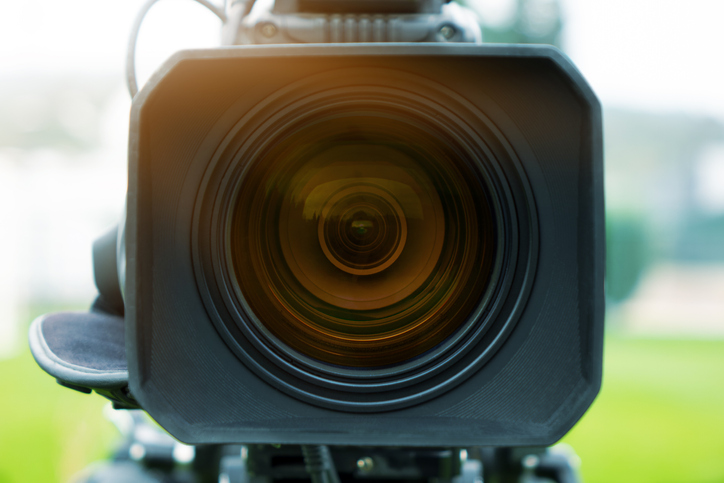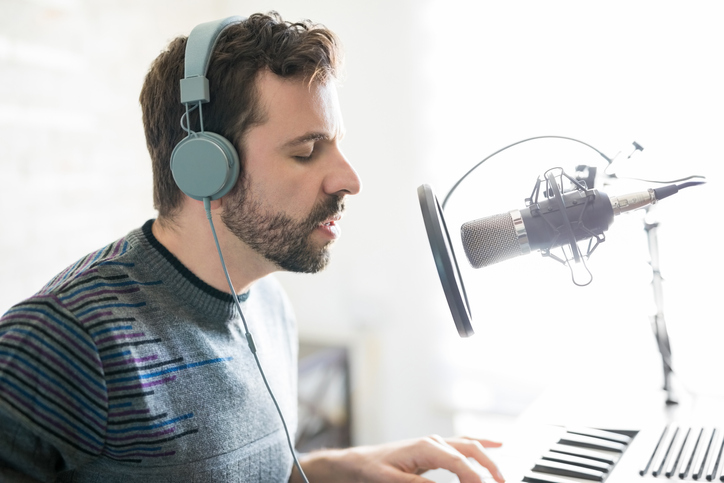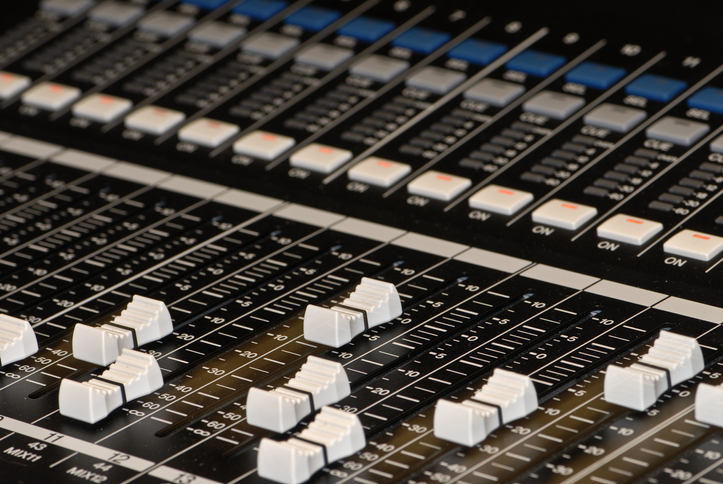The video experts blog
Professional Broadcast Video Equipment for Live Streaming
With the advent and ubiquity of streaming online, video equipment has become increasingly cost-effective. Now nearly anyone can get their hands on high-quality equipment. With it, more companies and individuals alike can live stream, stream live events, create a live broadcast, broadcast TV online and more.
- Mobile Live Streaming Video Equipment
- Professional Audio Equipment
- Capture, Mixing, and Encoding for Professional Video Broadcasts
- Live Streaming Delivery and Hosting Solution
- FAQs
- Final Thoughts
- Try Dacast free today
With rapid advances in technology, broadcasting continues to get easier, and professional broadcast video equipment is getting cheaper and better. Live streaming is becoming mainstream. With it, there are more streaming solutions available than ever.
In this article, we’ll recommend some of the best live streaming equipment to start producing high-quality live streaming and live broadcasting. We’ll provide you with an overview of some affordable and professional live streaming equipment and services. By the end of this article, you’ll be able to achieve incredible video quality through video streaming without breaking the bank.
Professional Cameras for Live Streaming
When it comes to professional broadcast video equipment, the camera is your centerpiece. The best quality option for live streaming cameras is to use a professional-quality HDMI or SDI camera. Professional cameras provide flexibility and excellent image quality. You can often change and upgrade lenses, use zoom and wide-angle fields of view, and do all of the things you’d expect from a professional camera.


This includes the ability to use external monitors, hot-swap storage and batteries, use filters, and so on. Professional cameras integrate seamlessly with professional video broadcast or live streaming setups. They typically feature HDMI or SDI outputs for connecting directly to capture cards or switchers, allowing for multi-camera productions. Another major advantage is support for XLR audio (the professional standard). XLR microphones provide superior audio clarity and flexibility compared to the built-in mics found on consumer cameras.
There is a huge range of professional cameras on the market, ranging from run-and-gun camcorders to cinema cameras that shoot in RAW to hydraulic-mounted studio cameras. For most live streams, a professional-grade camcorder is the preferred option, since it’s light, portable, and easy to integrate into a live streaming workflow.
One of the best-selling professional-grade cameras currently is the JVC GY-HM170UA. It costs around $2,000 and uses HDMI for video output. For SDI (the true professional standard), the best professional camera at the moment is the Sony PXW-Z190, at just under $4,000. Both are great options.
Mobile Live Streaming Video Equipment
There are many situations in which mobile video production gear is essential. Having professional broadcast video equipment that is small and lightweight can make all the difference between getting the shot and missing it.
For example, mirrorless cameras offer excellent image quality in a lightweight and compact body, making them perfect for frequent travels where portability is paramount. They also have impressive autofocus modes and capabilities which makes them ideal for capturing fast-paced action like street photography, recording live events, or to shoot sports.
Additionally, many mirrorless cameras come equipped with a mechanical shutter, which allows for flash synchronization at all shutter speeds.
However, relying solely on your phone’s cellular data for streaming can be risky. Signal strength can fluctuate, leading to dropped frames and choppy video.


So what’s the solution?
The answer is using a networking bonding encoder that can merge multiple cell phones and/or wireless networks into a single, strong mobile broadband connection. To learn more about cellular bonding technology, check out this article on mobile live streaming equipment. Or, check out the solutions from a professional broadcast video equipment provider like LiveU.
Professional Audio Equipment
Most professional-grade video cameras (including our picks) integrate high-quality shotgun mics into the camera itself. However, if you need the highest possible audio quality or more flexibility, you can add a mic using an XLR audio cable.


Lavalier, shotgun, or handheld condenser mics can all be a fantastic choice. Which is best for you depends entirely on your situation. Lav mics are great for static interviews. Wireless lavs can be great for a wandering, mobile shoot, where you want clear speech without the mic being visible. Shotgun mics are best for directional sound. They mount directly onto your camera and provide a clear, focused audio track. And handheld mics are best for music, studio recording, and when quality is the number-one consideration.
For a complex shoot, you may want to have multiple different audio sources at the same time. This will require some sort of audio mixing.
If you’re using live streaming encoding software, you may be able to mix your audio sources on your workstation or laptop. A more expandable professional option is to use a separate audio mixer, then output that clean signal into your encoder. Remember, the more complex you get, the more trained staff you will need to operate your equipment.
Capture, Mixing, and Encoding for Professional Video Broadcasts
Now we need a professional solution for capturing your video and audio from your cameras, mixing it into final production, and encoding it for live streaming.
In the field, you may use a simple on-camera live stream encoder to go live directly. In a studio setting, you may use separate tools for all of these parts. Capture cards connect to your cameras. Workstation computers can be used with tools like Wirecast and vMix for mixing content. And encoders send your streams to your video host.


There are two types of encoders: hardware and software. Hardware encoders are best for professional use. They can support a wide range of sources, often HDMI and SDI cameras. They’re usually built to last and can support 24/7 video streaming solutions without crashing.
Hardware encoders also come in various form factors. Studio units are usually hefty, rack-mounted things. These can also go in vans for mobile production studios. There are also smaller hardware encoders that can fit on a desk and even backpack-mounted hardware encoders for mobile use. You can find hardware encoders in various online video broadcasting equipment shops.
Live Streaming Delivery and Hosting Solution
Professional live streaming also requires an online video platform for hosting and delivering your video content. We don’t recommend using consumer video platforms like YouTube. They have major downsides. For example, workplaces and universities often block these platforms. Content recommendations can include inappropriate or competitive videos. And they’re not a white label, which is a basic professional requirement.


The alternative is a professional online video platform (OVP). A quality OVP provides tools for video security, monetization, and customization. All this occurs in a white-label platform that can be customized for your branding and embedded on your website.
Dacast is a professional platform that offers online video and audio hosting and live streaming services starting at just $39/month. It’s packed with a full range of professional features, and all content is delivered via Akamai Limelight, the world’s leading CDN.
We also offer you a range of professional services to help launch a new streaming service or app, build a custom video portal, integrate via our API, and more. If you are interested in learning more about the Dacast platform and discussing your business needs, contact us at any time.
FAQs
1. What equipment do I need to make professional videos?
Professional video production requires a variety of equipment more than just a camera. A high-quality camera such as a mirrorless or professional DSLR camera is essential, but you’ll also need professional broadcast video equipment like tripods, lighting rigs, microphones, and external recorders. Additionally, video software like video mixers and encoders might be needed for multi-camera productions or live streaming
2. What do I need to get into videography?
Getting started in videography requires less equipment than professional productions. A good quality camera (DSLR or mirrorless) with a versatile lens is a great starting point. Invest in a tripod for stable shots and a basic microphone to improve audio quality. Lighting can significantly enhance your videos, so consider affordable LED lighting options. As you progress, you can explore professional video equipment for more control and higher production value.
3. What is considered a professional camera?
Professional cameras, often used in broadcast or high-end video productions, offer superior image quality and features compared to consumer cameras. They typically have larger sensors for better low-light performance, interchangeable lenses for creative flexibility, and sturdy built for heavy use. Professional cameras might also have features like SDI outputs for connecting to external recorders and monitors.
4. How much does live streaming equipment cost?
Live streaming equipment costs vary depending on your needs. A basic setup might involve a camera for live streaming, a capture card to connect it to your computer and live streaming software. For professional live streaming, you’ll need professional live streaming equipment like video mixers, encoders, and professional audio equipment to ensure smooth broadcasts with high-quality audio and video.
5. What camera do most professional photographers use?
Most professional photographers use high-end DSLR or mirrorless cameras from brands such as Canon, Nikon, and Sony. These cameras offer superior image quality, customization options that allow for greater control over the video, and advanced features like fast autofocus systems, and a full-frame mirrorless sensor which is larger than the APS-C camera sensors found in other cameras. However, the specific camera used can vary widely depending on the photographer’s preferences and the type of photography being done.
Final Thoughts
Choosing the right equipment for broadcasting, live broadcasts and live streaming. By using the information provided in this article, you’ll be better equipped to understand and choose the right professional live stream and live video equipment.
Whether you’re a beginner or a seasoned pro, we invite you to check out Dacast. With Dacast, you get all the features you need for video streaming your greatest content. Get up and running and minutes. Begin to stream live video that your viewers deserve today.
Dacast can be tried in full free for 14-days. Sign-up is quick and no credit card is required.
Try Dacast free today
We hope this article has been useful. If you have any questions, comments or suggestions, let us know.
Want regular live-streaming tips, exclusive offers and access to a community of live-streaming pros? Join our LinkedIn group.


